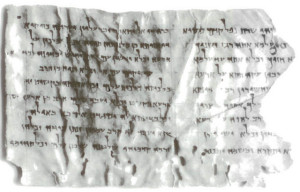Messianism
Postbiblical Judaism in all its forms has a belief in the messianic idea. This idea generally involves the coming of a redeemer, a descendant of King David, who will make sweeping changes in the world, including peace, prosperity and the end of suffering from evil and misfortune. Jewish messianism is a combination of two approaches – the restorative, which seeks to bring back the glories of the past and the utopian, which envisions a world which is far superior to the current one. These two concepts exist in all messianic aspirations, but the balance between the two is what makes each strand unique.
The Dead Sea sect placed great emphasis on the End of Days. On the one hand, the sectarians envisioned a classical Davidic messiah. On the other hand, they envisioned a world run by the Messiah of Aaron who would take charge of spiritual matters, and the Messiah of Israel, who would preside over political matters. This restorative approach existed alongside the utopian, in which a great war would be followed by a messianic banquet and the Torah would finally be able to observed as it was meant to be.
The sectarians believed that the End of Days was near and would happen during their lifetime. Their lives in the desert community of Qumran were dedicated to preparing for the messianic age.
Although it is not clear when exactly these elements of the messianic doctrine were developed, they can be dated to sometime in the Hasmonean period. The combination of restorative and utopian approaches, which first appears in Qumran, exercised a powerful role in the future of Jewish messianic thought.
Primary Sources
What do you want to know?
Ask our AI widget and get answers from this website
